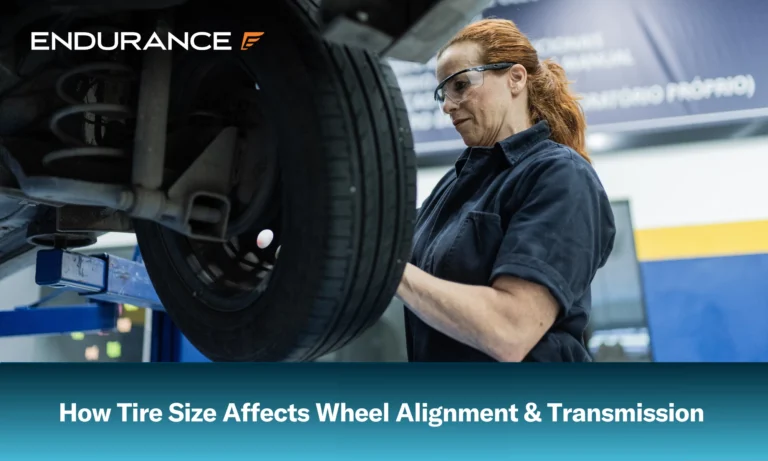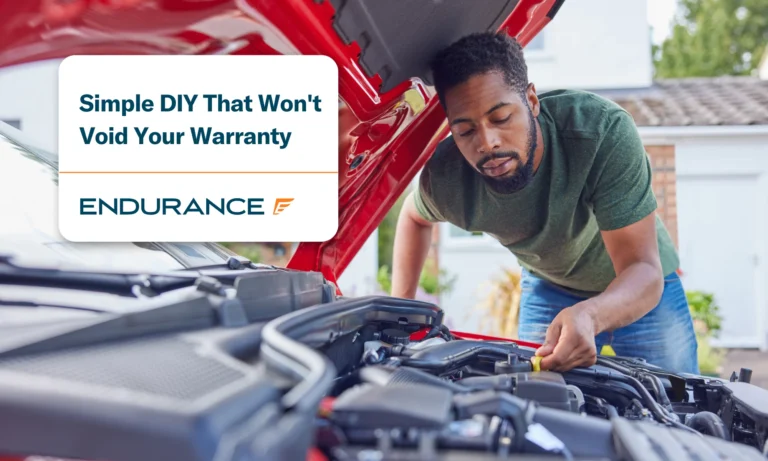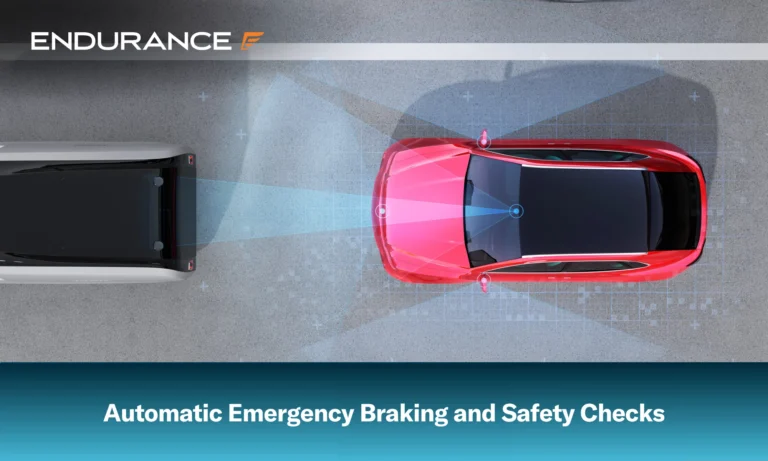Noviembre da la bienvenida a la temporada navideña, por lo que las distracciones son comprensibles. Sin embargo, no mantener al día el mantenimiento de su automóvil Esto puede ocasionar problemas en los próximos meses. Esta precaución es especialmente importante con los neumáticos, ya que las carreteras resbaladizas pueden aparecer antes de lo previsto. Al mismo tiempo, las temperaturas bajan, la presión de los neumáticos disminuye, la goma se endurece y la tracción se reduce.
Revisar los neumáticos ahora, inspeccionando la banda de rodadura, comprobando el desgaste o investigando antes de comprar unos nuevos, puede garantizar tu seguridad antes de que llegue el invierno. Además, actuar ahora evita las prisas de diciembre, cuando todo el mundo está planeando sus viajes de vacaciones. Sigue leyendo para descubrir por qué noviembre es el mes ideal. El mejor momento para preparar los neumáticos de tu coche para el invierno.
¿Por qué las temperaturas hacen de noviembre el punto de inflexión de los neumáticos?
El rendimiento de los neumáticos y la temperatura están directamente relacionados. Por cada descenso de 10 °F, la presión atmosférica cae entre 1 y 2 PSI., lo cual puede provocar una inflación inferior a la real y una gestión deficiente. Para poner estas cifras en perspectiva, el Departamento de Energía de Estados Unidos Los informes indican que el consumo de combustible (o eficiencia de combustible) disminuye en aproximadamente 0,21 PSI por cada reducción de 1 PSI en la presión promedio de los neumáticos. La Administración Nacional de Seguridad del Tráfico en las Carreteras (NHTSA)Administración Nacional de Seguridad Vial (NHTSA)Ofrece estadísticas más contundentes sobre la importancia del mantenimiento de los neumáticos y de usar los adecuados. Cada año, se producen casi 11 000 accidentes de tráfico relacionados con los neumáticos en Estados Unidos, que provocan más de 600 muertes anuales.
Más allá de estas cifras significativas, las bajas temperaturas tienen otros efectos. Principalmente, los compuestos de caucho de los neumáticos para todas las estaciones se endurecen por debajo de los 7 °C (45 °F), lo que afecta la adherencia a la carretera. La tracción disminuye y la distancia de frenado aumenta. Gracias a la formulación especial del caucho, los neumáticos de invierno resultan útiles en climas donde las temperaturas se mantienen constantemente por debajo de este umbral.
Si opta por cambiar los neumáticos de invierno, noviembre es el mes más adecuado. Así evitará las prisas de la temporada y quizá tenga suerte y encuentre alguna oferta anticipada del Black Friday. Además, el clima más templado permite a los técnicos centrarse mejor en su coche.
Profundidad de la banda de rodadura, patrones de desgaste y comprobaciones sencillas en casa
La banda de rodadura de un neumático es fundamental para afrontar la lluvia, el hielo y el aguanieve. Cuando la profundidad de la banda de rodadura alcanza los 4/32 de pulgada, la tracción en invierno se ve comprometida. Si baja de 2/32 de pulgada, la ley en la mayoría de los estados exige que se cambien los neumáticos. Una prueba básica de profundidad de la banda de rodadura consiste en insertar una moneda de un centavo al revés entre los tacos. Si se ve la cabeza de Lincoln, hay que cambiar los neumáticos. Consulte el consejo práctico a continuación para comprobar la profundidad de los neumáticos con un medidor especializado pero sencillo.
Aquí tienes un desglose de los problemas más comunes en la banda de rodadura de los neumáticos y sus causas. Anticiparse a estos problemas puede retrasar la necesidad de cambiar los neumáticos.
| Problema de la banda de rodadura |
Causa |
| Desgaste central |
Sobreinflación |
| Desgaste de los bordes |
Subinflación |
| Desgaste unilateral |
Problemas de alineación |
| Ahuecar o festonear |
Problemas de suspensión o equilibrio |
| Plumaje |
desalineación de las ruedas |
Una inspección minuciosa por cuenta propia implica revisar el flanco del neumático en busca de protuberancias, cortes o grietas. Incluso daños menores en esta zona pueden afectar la seguridad del neumático. Si observa un desgaste irregular de la banda de rodadura, consulte con un técnico experimentado para que confirme la causa antes de gastar dinero en reemplazar los neumáticos.
Consejo profesional: Usa un manómetro para neumáticos.
Si bien la prueba de la moneda es útil, un medidor de presión de neumáticos puede ser invaluable. Es un dispositivo fácil de usar que cuesta alrededor de $10 y proporciona lecturas precisas de la profundidad de la banda de rodadura. Siga estos pasos para obtener una visión más completa del estado de la banda de rodadura:
- Paso 1: Inserte el manómetro en una ranura de la banda de rodadura cerca de la parte delantera del neumático y tome lecturas adicionales en el centro y cerca de la parte trasera. Los valores deberían ser razonablemente consistentes.
- Paso 2: Repita el paso 1 en otros dos o tres puntos alrededor del mismo neumático.
- Paso 3: Repita el mismo procedimiento con cada neumático restante.
- Paso 4: Compara tus notas para cada neumático. Lecturas consistentes indican un desgaste uniforme; valores desiguales pueden señalar problemas de suspensión, alineación o presión de inflado.
Neumáticos de invierno vs. neumáticos para todas las estaciones: ¿Cuál te conviene más?
El Debate sobre neumáticos de invierno versus neumáticos para todas las estaciones La elección de neumáticos depende del lugar donde conduzcas. Los neumáticos para todas las estaciones funcionan bien en la mayoría de las condiciones, incluyendo inviernos moderados con nieve o hielo ocasionales. Sin embargo, los neumáticos de invierno ofrecen una clara ventaja cuando las temperaturas se mantienen constantemente por debajo de los 7 °C (45 °F) y es más probable que las carreteras estén resbaladizas.
Las ranuras más profundas y los compuestos flexibles mejoran el frenado sobre nieve y hielo. En las pruebas, Soporte para neumáticos Los estudios demostraron que los vehículos con neumáticos de invierno sin clavos que circulaban a 16 km/h se detenían en unos 6,4 metros, en comparación con los casi 12,2 metros de los coches con neumáticos para todas las estaciones. Los neumáticos de invierno también ofrecen mayor estabilidad en las curvas y mejor tracción en pavimento frío y resbaladizo.
¿Necesitas neumáticos de invierno? Ten en cuenta estos elementos para determinar qué te conviene más:
| Clima invernal |
¿En su región nieva con frecuencia o se produce lluvia helada? |
| Rutas en coche |
¿Conduces por carreteras que no se han despejado completamente después de las precipitaciones invernales? |
| Tipo de vehículo |
Si bien la tracción integral (y la tracción delantera, en menor medida) mejora la aceleración, esta capacidad resulta poco útil para frenar o girar en la nieve. Los neumáticos de invierno mejoran estas tres funciones. |
| Presupuesto |
Los neumáticos de invierno de calidad cuestan entre $150 y $300 cada uno, más los gastos de montaje. Sin embargo, dependiendo de la zona donde vivas, solo se utilizan entre cuatro y seis meses al año. |
TPMS, caídas de presión y consejos para inflar en clima frío
En noviembre, que se encienda la luz de advertencia de presión de los neumáticos no es inusual. Una alerta del TPMS en clima frío generalmente indica que un neumático tiene baja presión debido a la pérdida natural de presión, no a un pinchazo. Las bajas temperaturas provocan la contracción del aire, lo que resulta en una pérdida de presión. En la mayoría de los autos, la luz de advertencia del tablero se enciende cuando el nivel baja de 251 psi (1,5 bar) por debajo del nivel normal.
Cuando la presión de los neumáticos baja en frío, suele ser simplemente por física; no se preocupe. Solo revise el nivel y añada aire. Verifique la nivel correcto de presión de los neumáticos Fíjese en la etiqueta de la puerta del conductor o del marco de la puerta. Luego, infle el neumático según las instrucciones. Siempre es recomendable revisar la presión de los neumáticos después de unos días para asegurarse de que no haya una fuga lenta.
Ten en cuenta estos consejos para inflar tu ropa en climas fríos:
- Compruebe la presión de los neumáticos mensualmente (no espere a que se encienda la luz de advertencia del TPMS).
- No infles los neumáticos en exceso para compensar la baja presión. Una presión de aire superior a la normal puede aumentar el desgaste de los neumáticos, afectar la tracción y generar condiciones de conducción incómodas.
- Compruebe la presión con los neumáticos fríos. Las lecturas tomadas después de conducir pueden variar en varios PSI debido a que el calor aumenta temporalmente la presión del aire.
- Considera adquirir un inflador de neumáticos portátil. Estos dispositivos económicos (alrededor de $25) facilitan la comprobación y el rellenado de la presión de los neumáticos.
Alineación y balanceo: Protegen la calidad de la conducción y la vida útil de los neumáticos
Un mantenimiento más completo de los neumáticos incluye un balanceo y una alineación regulares. Un conjunto de rueda y neumático balanceado mejora la comodidad de marcha al minimizar las vibraciones. Es un ajuste sencillo que la mayoría de los talleres y tiendas de neumáticos pueden realizar, y es especialmente importante en el caso de los neumáticos de invierno.
La alineación es fundamental para asegurar que los neumáticos hagan contacto con la carretera en los ángulos correctos. De lo contrario, los neumáticos se desgastarán de forma irregular y el coche podría desviarse. AAA Se recomienda revisar la alineación anualmente, después de golpear un bache o un bordillo, o si hay algún cambio en la conducción.
Un programa de mantenimiento completo incluye establecer un calendario de rotación de neumáticos, que puede coincidir con los cambios de aceite (aproximadamente cada 5000 a 7500 millas). Cambiar la posición de los neumáticos ayuda a distribuir el desgaste de manera más uniforme, prolongando su vida útil.
Cómo almacenar correctamente los neumáticos fuera de temporada
Hay dos maneras de gestionar los neumáticos de temporada: intercambiarlos entre un mismo juego de llantas o usar llantas específicas para cada juego. Ninguna opción es mejor que la otra; se trata de comodidad y coste. Usar un solo juego de llantas implica pagar el montaje y equilibrado cada vez que se cambian. Un segundo juego supone un mayor desembolso inicial, pero elimina esos gastos recurrentes. Si te gusta hacer las cosas tú mismo, puedes realizar el cambio de neumáticos de temporada, aunque siempre es recomendable que un profesional revise el equilibrado y la alineación después.
Independientemente de la configuración de tu sistema, aquí tienes algunos consejos para almacenar los neumáticos:
- Limpio: Enjuague para eliminar la suciedad, la sal y otras acumulaciones, luego seque completamente.
- Tienda en interiores: Conservar en un lugar fresco y seco, evitar la luz solar y el calor extremo.
- Posicionamiento: Apile los neumáticos y las ruedas montados o cuélguelos; reduzca la presión a 15 PSI. Coloque los neumáticos sin montar en posición vertical, girándolos ocasionalmente.
Como alternativa, algunas tiendas almacenarán profesionalmente sus neumáticos durante $50-$100 por temporada.
Lista de verificación rápida para unas vacaciones seguras
La preparación del coche para los viajes de vacaciones va más allá de los neumáticos, revisando estos otros sistemas clave antes de enfrentarse a carreteras frías o heladas.
- Batería: El frío puede debilitar una batería ya descargada. Hazla revisar (muchas tiendas de repuestos para autos lo hacen gratis), ya que las baterías de los autos tienen una vida útil limitada (normalmente de tres a cinco años).
- Fluidos: Asegúrese de que el refrigerante ofrezca suficiente protección contra la congelación y que el líquido lavaparabrisas sea apto para invierno. Compruebe y rellene los demás fluidos (aceite, dirección asistida, transmisión y frenos).
- Limpiaparabrisas: Inspeccione y reemplace los limpiaparabrisas según sea necesario.
- Luces: Compruebe que todas las luces exteriores funcionan correctamente.
- Kit de emergencia: Los suministros deben incluir una linterna, luces de emergencia o bengalas, un arrancador de batería o cables, mantas y refrigerios no perecederos.
Junto con estas comprobaciones, realice Mantenimiento Programado tareas (como una cambio de aceite y filtro) para asegurarte de que tu coche esté listo para conducir durante las vacaciones. Como con cualquier mantenimiento y reparación del vehículo, guarda los recibos para documentar el trabajo, que pueden ser necesarios si tienes un contrato de servicio para el vehículo o garantía extendida del automóvil.
Prepárate para el invierno con los servicios de Endurance Warranty
El frío puede generar incertidumbre entre los propietarios de automóviles, especialmente entre aquellos con vehículos antiguos que ya no cuentan con la garantía de fábrica. Un plan Endurance Warranty (también conocido como garantía extendida o plan de protección automotriz) ofrece protección contra averías y gastos de reparación inesperados.
Cada Plan Endurance Incluye asistencia en carretera 24/7 con remolque, apoyo con alquiler de coche, protección por interrupción de viaje y la libertad de elegir cualquiera taller de reparación autorizado para reparaciones cubiertas. Los clientes también tienen derecho a un año de Beneficios Elite con cobertura de reemplazo de neumáticos, reparación de parabrisas, reemplazo de llaveros y más.*
Infórmese sobre todo lo que ofrece un plan de protección de auto Endurance. Solicite una Cotización Gratis o visita nuestra tienda online para ver tu precio y recomendaciones de planes ahora. Los asesores del plan Endurance también están disponibles por teléfono en (800) 253-8203.
Leer el Blog Endurance Para obtener más información sobre garantías, mantenimiento por cuenta propia, consejos de reparación, reseñas de vehículos y más.















Dave es un periodista especializado en automoción que combina una profunda pasión por los coches, experiencia práctica en mecánica y conocimiento de los concesionarios. Su trabajo se centra principalmente en consejos para consumidores y artículos para aficionados al automovilismo. Colaborador habitual de SlashGear.com y otras plataformas líderes en automoción, Dave se licenció en Periodismo en la Universidad George Washington.